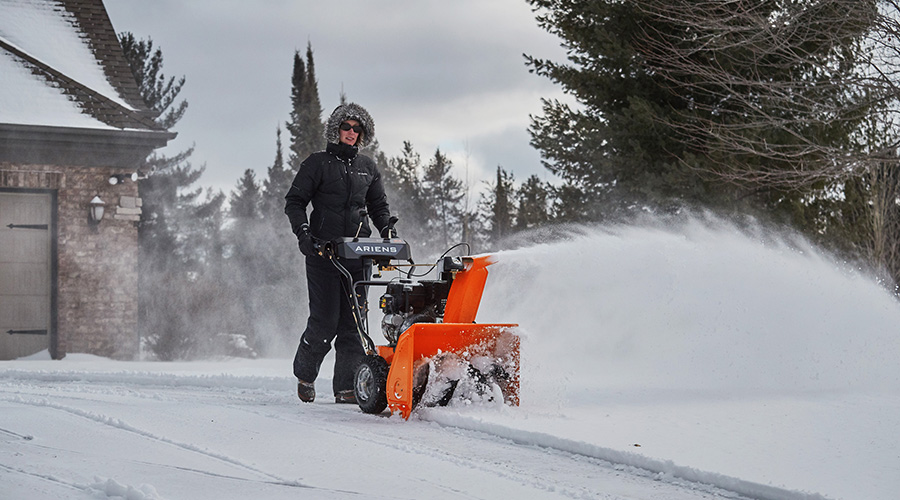Versatile Vehicles: Snapshots of Success
Three grounds care departments offer insights into a range of vehicles that help them round out their equipment arsenals
Editor’s note: While mowers remain central pieces of equipment for many grounds care departments, managers are looking to an array of increasingly flexible vehicles at their disposal that can carry out tasks. Utility vehicles, golf carts and tractors, equipped with attachments and the latest safety features, offer workers reliable vehicles that can carry equipment, materials and people to all parts of an organization’s grounds. Here are three organizations that have tapped into the versatility of these vehicles.
University of North Carolina-Greensboro: Meeting Urban Challenges
Urban university campuses present grounds care managers with challenges that peers in facilities located in less populated areas might not face. The challenges include smaller work areas and greater congestion on roads and sidewalks. For these reasons, grounds care workers at the University of North Carolina-Greensboro increasingly rely on utility vehicles to carry out daily operations.
One benefit that attracts managers to these pieces of equipment, aside from versatility, is their relatively small size that often can make them more viable where space is a concern.
“Because we’re an urban campus, parking is an issue,” says Chris Fay, grounds manager for the 200-acre university, which features relatively few roadways but a larger number of plazas and sidewalks. “It makes a big difference if you're parking a bigger type of vehicle versus a smaller utility vehicle.”
The department’s 23-person staff uses eight vehicles from different manufacturers — the first purchased five years ago — to carry out a range of light-duty grounds tasks. These tasks include hauling equipment such as blowers and trimmers between jobs, as well as toting topsoil around campus, either in the vehicles’ beds or in small, attached trailers, Fay says. One vehicle is equipped to handle a boom sprayer.
Generally, the department has been pleased with the vehicles’ performance.
“They’ve lasted a long time, and we haven’t had many mechanical problems,” he says.
The department’s future vehicles will need to carry out many of the same functions as current vehicles, Fay says, but adds that he will avoid specifying larger, four-wheel-drive utility vehicles. While current vehicles obviously are work equipment, Fay says four-wheel drive vehicles might not create the same impression among both staff and the larger university community.
“I was not really impressed with them,” he says. “They tend to send a bad message to people. They look like something you might see someone riding on the weekend.” Fuel considerations also will play a larger role in his future purchasing decisions. The department’s current vehicles use diesel fuel.
“They create a problem when it comes to steering among pedestrians and creating smoke,” he says. “I prefer electric (vehicles), but the staff feels that they might not have the power of gas-powered vehicles.”
University of Kentucky: Golf Carts as Practical Alternatives
While many institutional and commercial organizations use utility vehicles for their grounds care operations, the vehicles are not for everybody.
“We have a couple (utility vehicles) and tried different ones, but for our campus, they just don’t work out,” says Ken Wiley, the University of Kentucky’s grounds manager. His 56-person staff prefers not to use them because of concerns about comfort and noise.
Utility vehicles also are designed to carry much more weight than his staff needs to carry regularly. Instead, the crew tends to favor smaller vehicles to help them get around the 1,000-acre campus and carry items such as shovels, rakes, toolboxes, and small bags of fertilizer and salt.
Wiley says his staff discovered that golf carts are more practical for their operations than utility vehicles. In addition, golf carts tend to be more visually appealing on the campus than alternatives such as utility vehicles and pick-up trucks.
“Nobody seems to mind or even notice when a golf cart is parked on the campus,” he says. “But if you park a pick-up on the side of the turf, everyone will ask ‘Why is it there?’ ”
The university’s grounds care department currently has about a dozen golf carts and buys a used one for about $1,000 whenever the budget allows.
“Then, we spend up to $2,000 to fix it up and suit ourselves,” Wiley says. Mechanics in the department add items such as a rack, salt spreader, lights, and a windshield, and they make other basic modifications to it.
“The good thing about golf carts is, you can get parts for them,” Wiley says, adding that the university’s mechanical shop takes care of all equipment in the grounds care fleet, including golf carts.
“We do regular maintenance on them and treat them like any other vehicle,” he says. “We haven’t gotten rid of one yet.”
The grounds care workers often use the carts throughout the workday and in all types of weather.
“I don’t know why the people in the utility vehicle business don’t make them more like golf carts,” Wiley says, adding that the industry seems to have a mentality that utility vehicles need to be rigid and able to carry a great deal of weight.
“But if you don’t make them comfortable, people won’t want to drive them,” he says. “Our guys would much rather have a small golf cart.”
Bergen County (N.J.) Parks: Covering Ground Efficiently
The Bergen County Department of Parks in Hackensack, N.J., maintains more than 9,000 acres that includes more than 20 parks, one zoo, and four golf courses. Nearly 70 workers — about 80 percent of the staff — use utility vehicles to complete their daily tasks, including maintaining biking and hiking trails and cleaning park facilities.
“We especially need the utility vehicles for the reservations, where we have several miles of hiking trails,” says Todd Cochran, the organization’s assistant county park superintendent. “We have a lot of ground to cover during the workday, and without some type of off-road transportation, it would be impossible to cover very much ground.”
The department uses six-wheel-drive vehicles — particularly for one of the county’s wilderness parks — for maintaining the trails and driving on rugged off-road terrain.
“Our six-wheel-drive vehicles are indispensable when it comes to getting from point A to point B,” he says. “It’s the only way to get around.” The department owns about 30 utility vehicles and performs its own regular maintenance on them.
“We’re using them more and more,” Cochran says, in part because the vehicles tend to be more practical and fuel efficient than other types of vehicles.
“If a grounds care worker is staying within the park, it is more economical for him to use a utility vehicle rather than a pickup truck,” he says. “By using them, we can get really good fuel economy. They’re also far less imposing than a dump truck or full-sized pickup, especially in park areas where there are a lot of bicyclists, pedestrians, children and dogs on leashes.”
‘Alternative’ Vehicle Considerations
More often these days, when the discussion turns to utility vehicles applications in grounds care, the subject of alternative fuels also comes up. Grounds care managers specifying equipment for their operations should consider the benefits and limitations of such equipment options.
The two main types of alternative fuels used today are compressed natural gas and ethanol/gas blends (E85). Other alternatives include bio-diesel, electric, liquified natural gas and hydrogen. Though interest in alternative fuels is on the rise, they are not widely used these days for several reasons.
First, the purchase prices of vehicles that use alternative fuels is higher than prices for those that use diesel fuel or gasoline.
Second, the infrastructure to dispense alternative fuels is limited. The state of Virginia, for example, has only 22 CNG, 1 E85, 58 propane, 11 electric, one bio-diesel, two liquified natural gas facilities, and none that dispense hydrogen.
Finally, alternative-fuel vehicles often have low resale values, in part because maintaining them often requires special training and certification.
Public utility, and state and federal government fleets, are subject to special acquisition requirements under Energy Policy Act regulations. But for now, private companies, local governments, emergency vehicles, and military and law-enforcement fleets are not mandated to use alternative fuels.
Click for more information related to alternative fuels.
|
Related Topics:











